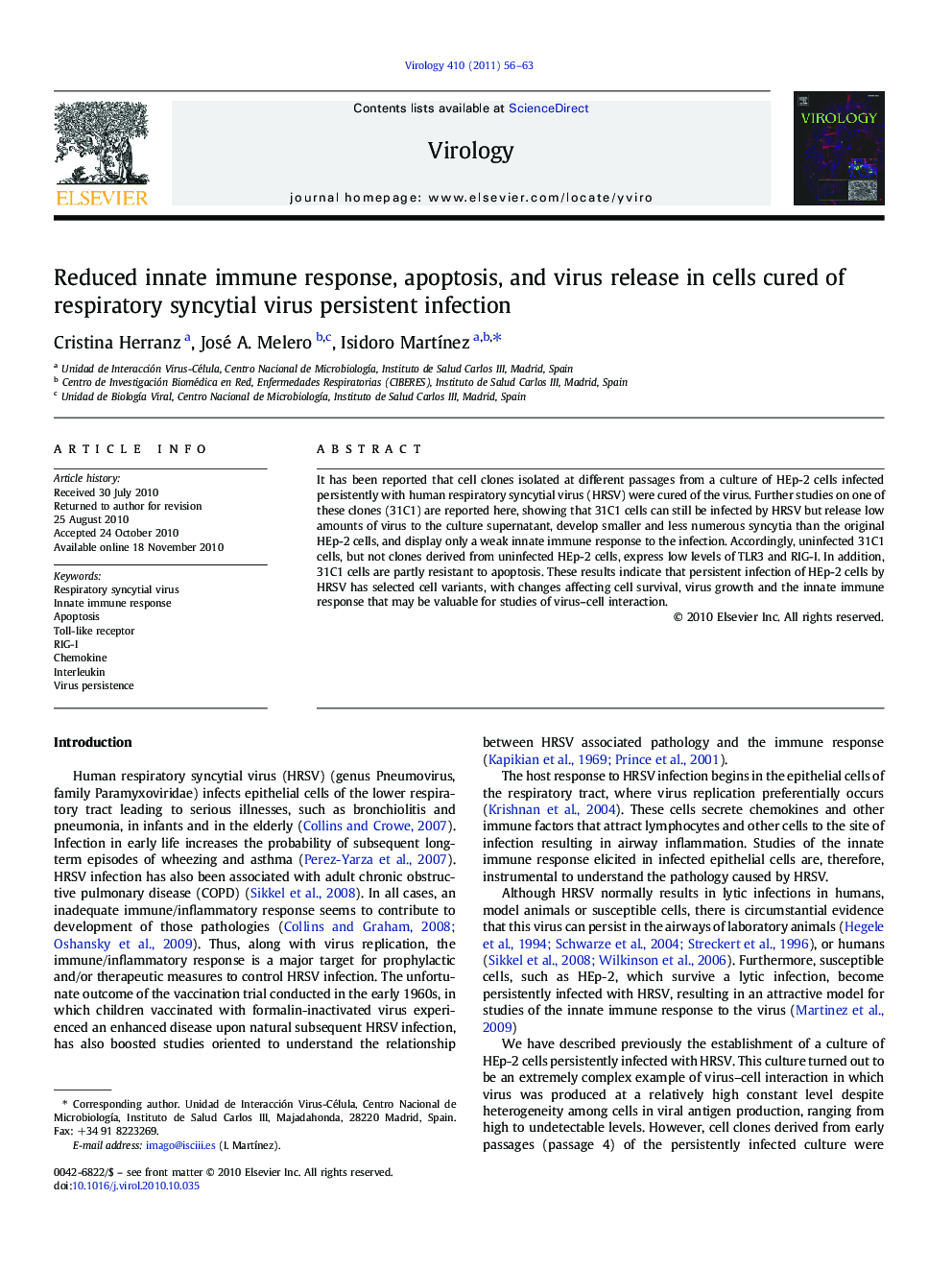| Article ID | Journal | Published Year | Pages | File Type |
|---|---|---|---|---|
| 6141515 | Virology | 2011 | 8 Pages |
It has been reported that cell clones isolated at different passages from a culture of HEp-2 cells infected persistently with human respiratory syncytial virus (HRSV) were cured of the virus. Further studies on one of these clones (31C1) are reported here, showing that 31C1 cells can still be infected by HRSV but release low amounts of virus to the culture supernatant, develop smaller and less numerous syncytia than the original HEp-2 cells, and display only a weak innate immune response to the infection. Accordingly, uninfected 31C1 cells, but not clones derived from uninfected HEp-2 cells, express low levels of TLR3 and RIG-I. In addition, 31C1 cells are partly resistant to apoptosis. These results indicate that persistent infection of HEp-2 cells by HRSV has selected cell variants, with changes affecting cell survival, virus growth and the innate immune response that may be valuable for studies of virus-cell interaction.
